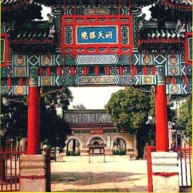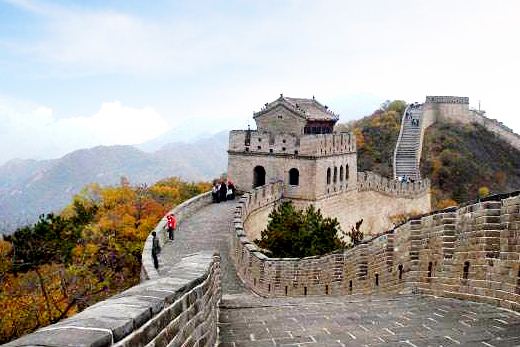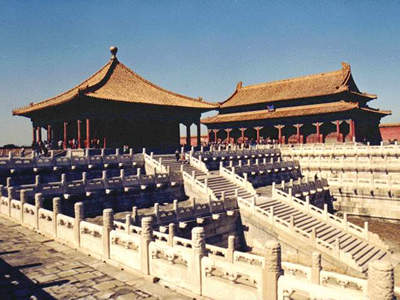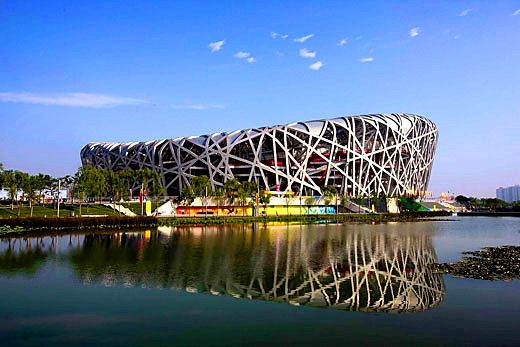 The Bai Yun Temple, or White Cloud Temple is located in southwestern Beijing, directly behind the Broadcasting Building. It was called the Temple of Heavenly Eternity during the Tang Dynasty and the Temple of the Great Ultimate during the following Jin Dynasty.
The Bai Yun Temple, or White Cloud Temple is located in southwestern Beijing, directly behind the Broadcasting Building. It was called the Temple of Heavenly Eternity during the Tang Dynasty and the Temple of the Great Ultimate during the following Jin Dynasty.
It is the largest Daoist architectural complex in Beijing and was the former headquarter of the Dragon Gate sect.
Although historical records indicate that there were Daoist temples in Beijing during the Tang Dynasty, it was not until the early Yuan Dynasty that they were built on a large scale.
The Yuan Emperor Shizu (Kublai Khan), whose reign lasted from 1260 to 1293, appointed a Daoist priest from Shandong province to the position of "National Teacher,"which nominally put him in charge of all Chinese Doaist affairs. This priest's name was Qiu Chuji, but he was commonly known as the Sage of Eternal Spring (Changchun Zhenren). While Qiu Chuji was in Beijing, he resided in the Temple of the Great Ultimate, which he expanded and renamed the Temple of Eternal Spring (Changchungong). From then on, it became the center of Daoism in northern China. It was not until the Zhengtong era (1436-1449) of the Ming Dynasty that its current name was adopted.
The extant temple was rebuilt in the Qing Dynasty and exemplifies the Daoist architecture of the period.
The complex is composed of multiple courtyards set out on a central axis. From front to back the structures are as follows: a memorial archway, the main gate, a pool, a bridge, the Hall of Officials of the Heavenly Censor ate (corresponding to the Buddhist Hall of Heavenly Kings), the Hall of the Jade Emperor and the Hall of Religious Law (corresponding to the rear hall of a Buddhist temple).
In the center of the rear courtyard is the Hall of the Patriarch Qiu, devoted to the worship of Qiu Chuji, and behind this, the Hall of the Four Heavenly Emperors, the second story of which is the Hall of Three Purities (corresponding to the Sutra Repository of Buddhist temples and housing the Daoist Tripitaka).
Here one can see the similarity between Daoist and Buddhist temple architectures, though the decorative details and paintings make use of specifically Daoist motifs such as lingzhi fungus, specifically Daoist immortals and cranes, and the Eight Diagrams.
The temple contains a stela with calligraphy by Emperor Qianlong recording in detail the history the history of the temple and the life of Qiu Chuji.


 About Beijing
About Beijing 


